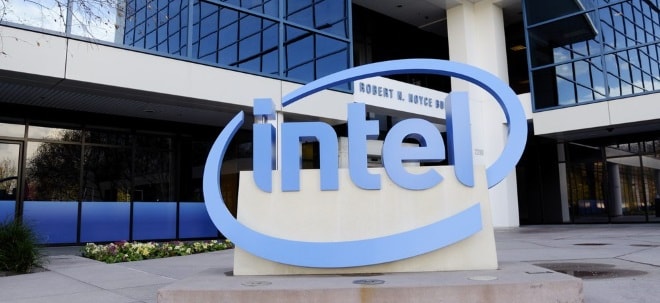Intermodal Freight Transportation Market to Grow by USD 69.4 Billion from 2025-2029, Boosted by Reduced Freight Costs and Intermodal Services, with AI Impact - Technavio
NEW YORK, Feb. 7, 2025 /PRNewswire/ -- Report with the AI impact on market trends - The global intermodal freight transportation market size is estimated to grow by USD 69.4 billion from 2025-2029, according to Technavio. The market is estimated to grow at a CAGR of almost 7.2% during the forecast period. Reduced freight transportation costs with intermodal services is driving market growth, with a trend towards growing popularity of multimodal transportation. However, high infrastructure costs poses a challenge. Key market players include AP Moller Maersk AS, BDP International Inc., C H Robinson Worldwide Inc., Convoy Inc., CSX Corp., Deutsche Bahn AG, Deutsche Post AG, Elemica Inc., Hapag Lloyd AG, J B Hunt Transport Services Inc., Koerber AG, Kuehne Nagel Management AG, Lynden Inc., MARTEN TRANSPORT LTD., Trimble Inc., Uber Technologies Inc., United Parcel Service Inc., Westinghouse Air Brake Technologies Corp., WiseTech Global Ltd., and XPO Inc..
Key insights into market evolution with AI-powered analysis. Explore trends, segmentation, and growth drivers- View Free Sample PDF
Intermodal Freight Transportation Market Scope | |
Report Coverage | Details |
Base year | 2024 |
Historic period | 2019 - 2023 |
Forecast period | 2025-2029 |
Growth momentum & CAGR | Accelerate at a CAGR of 7.2% |
Market growth 2025-2029 | USD 69.4 billion |
Market structure | Fragmented |
YoY growth 2022-2023 (%) | 6.6 |
Regional analysis | North America, Europe, APAC, Middle East and Africa, and South America |
Performing market contribution | North America at 33% |
Key countries | US, China, Canada, Germany, UK, India, France, Italy, Japan, and South Korea |
Key companies profiled | AP Moller Maersk AS, BDP International Inc., C H Robinson Worldwide Inc., Convoy Inc., CSX Corp., Deutsche Bahn AG, Deutsche Post AG, Elemica Inc., Hapag Lloyd AG, J B Hunt Transport Services Inc., Koerber AG, Kuehne Nagel Management AG, Lynden Inc., MARTEN TRANSPORT LTD., Trimble Inc., Uber Technologies Inc., United Parcel Service Inc., Westinghouse Air Brake Technologies Corp., WiseTech Global Ltd., and XPO Inc. |
Market Driver
Intermodal and multimodal transportation share similarities as they both utilize multiple modes of transportation. However, a key distinction exists between the two. In intermodal transportation, contracts are separate among carriers for each mode, whereas multimodal transportation falls under a single contract. With multimodal transportation, a single company manages the entire transport process across all modes. This setup offers several advantages: a single point of contact, reduced risk of loss or damage, streamlined document handling, and the ability to track goods at one location. The convenience of multimodal transportation is driving growth in the intermodal freight transportation market.
Intermodal freight transportation, which involves moving cargo using multiple modes of transport, is a trending topic in logistics management due to its potential to reduce freight costs and carbon footprint. Domestic product transportation faces increasing expenses, with trucking being a significant contributor. Intermodal rail offers an alternative, reducing reliance on truck transport and fuel use. However, cargo handling, damage, and loss are concerns. Intermodal rail's aggregate cost includes terminal fees, crane usage, and billable processes. Supply chain leaders turn to multimodal transportation to manage transportation expenses, capacity, and supply risk. Interruptions in supply chain can lead to productivity-stifling issues, and trucking faces challenges like driver shortages and truck volume. Intermodal rail's carbon emissions are lower per ton-mile than truck transport, making it an attractive choice for green supply chains. In the short term, intermodal freight moves can save on transportation expenses. In the long term, multimodal transportation capabilities provide a more reliable carrier base and improved supply chain management. However, rail facilities and stacking order at terminals must be efficient to maintain productivity.
Request Sample of our comprehensive report now to stay ahead in the AI-driven market evolution!
Market Challenges
- Intermodal freight transportation involves shifting containers between different modes of transport, such as trucks, trains, and ships. To facilitate this process, significant investments are necessary for installing cranes at ports and developing rail and road access. For instance, a modern crane can cost over USD5 million, making these infrastructure expenses substantial. These investments take time and resources to materialize, potentially hindering the growth of the intermodal freight transportation market during the forecast period. Hence, the high infrastructure costs associated with intermodal transportation may pose a challenge to market expansion.
- Intermodal freight transportation is a significant share of the freight transportation market, with road transport and rail industry collaborating to provide dependable freight shipment. Rail operations, including intermodal trains, offer efficient goods movement through precision-planned railroading, using railcars and locomotives on the rail network. However, challenges persist. Rail access and conversions of trucks to railcars require investment. The Precision Scheduled Railroading (PSR) strategy aims for faster speeds and longer trains, but decreases in equipment and staff can impact rail operations. New players, such as Duisburg's industrial clusters, are entering the transportation environment, increasing competition and changing shipping lanes. IANA reports show intermodal volume growth, with domestic container volume and domestic equipment usage increasing. Cost reductions are essential for railway operators to meet delivery locations on coast-to-coast railroads like CN and CPR, requiring effective transportation management.
Discover how AI is revolutionizing market trends- Get your access now!
Segment Overview
This intermodal freight transportation market report extensively covers market segmentation by
- Mode Of Transportation
- Rail Transport
- Road Transport
- Sea Transport
- Product
- Minerals And Ores
- Food And Farm Products
- Equipment And Instruments
- Chemicals
- Others
- Geography
- North America
- Europe
- APAC
- Middle East And Africa
- South America
1.1 Rail transport- Rail transport plays a crucial role in the global market by offering cost-effective and environmentally sustainable alternatives for moving commodities over long distances. Its efficiency and capacity to handle large volumes have led to significant growth in the rail transport sector over the past five years. Technological advancements, such as the integration of autonomous trains and enhanced tracking systems, have further boosted its competitiveness within the intermodal freight industry. As a result, the adoption of rail transport as a preferred mode of transportation is expected to continue driving market growth throughout the forecast period.
Download a Sample of our comprehensive report today to discover how AI-driven innovations are reshaping competitive dynamics
Research Analysis
Intermodal freight transportation involves moving cargo using multiple modes of transport, such as trucks, trains, and ships, to minimize freight costs and reduce carbon footprint. Cargo handling and damage or loss during the transfer between transport methods can be a concern. The aggregate cost of intermodal freight transportation includes logistics management expenses, trucking issues like trucker availability and trucking costs, terminal fees, billable processes like check-in and check-out, and service requests. Emissions from each transport method contribute to the overall carbon footprint. The stacking order of boxes, efficient cargo loading, and timely management of waybills, check-in, check-out, and service requests are crucial to ensure smooth intermodal freight transportation. International shipments may involve additional complexities like customs procedures for noncitizens and nonresidents, and cargo clearance at borders.
Market Research Overview
Intermodal freight transportation is a cost-effective and eco-friendly transport method that utilizes multiple modes of transportation, including trucks and rail, to move domestic products. Freight costs can be reduced by optimizing the use of different transport modes, especially rail, which has lower emissions per ton-mile than trucking. However, intermodal freight transportation also involves cargo handling, which can lead to damage and loss. Intermodal rail facilities require significant investment in infrastructure, such as cranes, containers, and railcars, and efficient management is crucial to minimize supply chain interruptions and risks. The reliance on trucking for the first and last mile of transportation can pose challenges, including trucking issues like driver shortages, productivity-stifling regulations, and capacity constraints. In the short term, transportation expenses can be managed through multimodal transportation and a diverse carrier base. In the long term, capabilities such as precision-planned railroading and faster speeds can increase the efficiency of intermodal rail operations. The carbon footprint of intermodal freight transportation is a significant concern, with rail operations contributing less greenhouse gas emissions per ton-mile than truck transport. However, the use of trucks for the first and last mile of transportation can offset these gains. Rail industry leaders are investing in railroad conversions and shipping equipment to reduce fuel use and carbon emissions. The COVID-19 pandemic has introduced new challenges to intermodal freight transportation, including border closures, self-isolation requirements for noncitizens and nonresidents, and supply chain disruptions due to lockdowns and social distancing measures. Effective logistics management and the use of technology for billable processes, service requests, and unit locations can help mitigate these challenges. In conclusion, intermodal freight transportation offers cost savings and environmental benefits, but also presents challenges related to cargo handling, trucking issues, and the impact of external events on supply chains. Effective management of intermodal transportation requires a multimodal approach, precision planning, and the ability to adapt to changing circumstances.
Table of Contents:
1 Executive Summary
2 Market Landscape
3 Market Sizing
4 Historic Market Size
5 Five Forces Analysis
6 Market Segmentation
- Mode Of Transportation
- Rail Transport
- Road Transport
- Sea Transport
- Product
- Minerals And Ores
- Food And Farm Products
- Equipment And Instruments
- Chemicals
- Others
- Geography
- North America
- Europe
- APAC
- Middle East And Africa
- South America
7 Customer Landscape
8 Geographic Landscape
9 Drivers, Challenges, and Trends
10 Company Landscape
11 Company Analysis
12 Appendix
About Technavio
Technavio is a leading global technology research and advisory company. Their research and analysis focuses on emerging market trends and provides actionable insights to help businesses identify market opportunities and develop effective strategies to optimize their market positions.
With over 500 specialized analysts, Technavio's report library consists of more than 17,000 reports and counting, covering 800 technologies, spanning across 50 countries. Their client base consists of enterprises of all sizes, including more than 100 Fortune 500 companies. This growing client base relies on Technavio's comprehensive coverage, extensive research, and actionable market insights to identify opportunities in existing and potential markets and assess their competitive positions within changing market scenarios.
Contacts
Technavio Research
Jesse Maida
Media & Marketing Executive
US: +1 844 364 1100
UK: +44 203 893 3200
Email: media@technavio.com
Website: www.technavio.com/
![]() View original content to download multimedia:https://www.prnewswire.com/news-releases/intermodal-freight-transportation-market-to-grow-by-usd-69-4-billion-from-2025-2029--boosted-by-reduced-freight-costs-and-intermodal-services-with-ai-impact---technavio-302371204.html
View original content to download multimedia:https://www.prnewswire.com/news-releases/intermodal-freight-transportation-market-to-grow-by-usd-69-4-billion-from-2025-2029--boosted-by-reduced-freight-costs-and-intermodal-services-with-ai-impact---technavio-302371204.html
SOURCE Technavio



